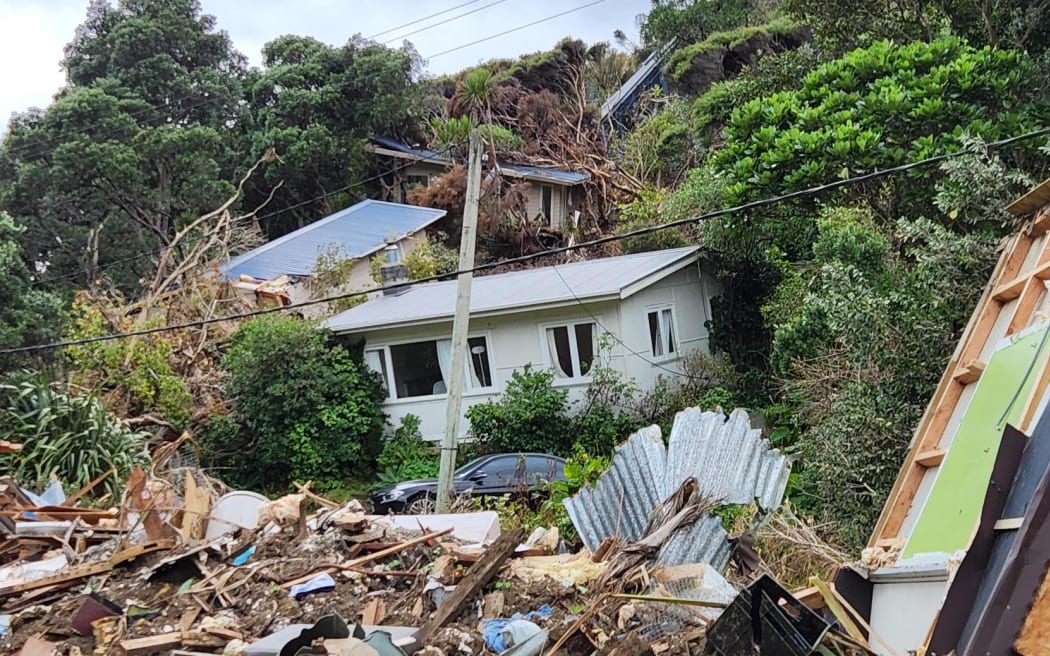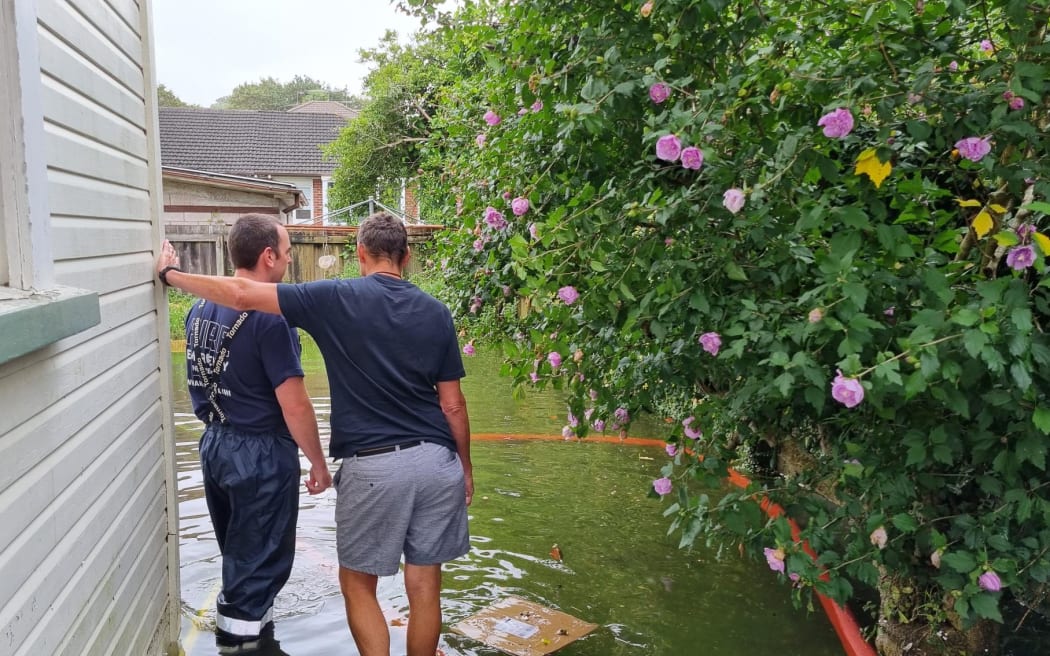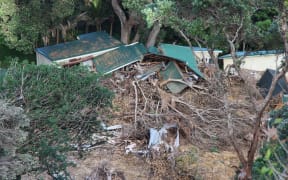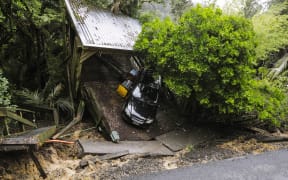
IAG received 26,000 claims from Auckland residents after the Anniversary Weekend flooding and Cyclone Gabrielle - the most weather-related claims in the past decade. Photo: RNZ / Finn Blackwell
The country's largest insurer says residents in regions hit by Cyclone Gabrielle lodged a record number of claims - topping the total claims it has received from each region in the past decade.
IAG, which owns AMI, State and NZI Insurance, said the North Island's stormy summer resulted in a huge increase in claims, with five times more claims lodged than last year.
It received 41,596 weather claims in the six months to the end of February, compared to 8293 for the same period last year.
IAG chief executive Amanda Whiting said almost twice as many claims were lodged for the North Island floods than for any other storm event.
"Those two events alone have generated more weather-related claims than what we received for the whole country, for the previous two and a half years," she said.
"The impact these storms have had on our country is profound."
IAG received 26,000 claims from Auckland residents after the Anniversary Weekend flooding and Cyclone Gabrielle - the most weather-related claims in the past decade.
It was a similar story in Gisborne and Hawke's Bay, where residents lodged more cyclone-related claims than all other weather-related claims in the past decade and nine years respectively.
As of this month, claims to IAG from the Anniversary Weekend flooding and Cyclone Gabrielle total 46,000 - 25,000 claims for the North Island floods and 21,000 for Cyclone Gabrielle.
That's almost half the total claims lodged for the two weather events, which the Insurance Council tallied at just over 96,500 last month.
IAG also surveyed public sentiment after the summer storms, as part of its six-monthly Wild Weather Tracker.
Substantial rise in weather concerns
It showed New Zealanders' levels of concern about weather events were at record highs, jumping from 45 percent concern before the storms to 83 percent after.
Those in the upper North Island had the biggest spike with levels of concern almost doubling, closely followed by those in the lower North Island.
"What we saw this summer was a stark reminder that storms are traumatising events that put people's lives at risk," Whiting said.

People in the upper North Island expressed the most concern about possible damage from weather events. Photo: RNZ / Tom Taylor
The survey found just over half of people in the upper North Island and close to a third of those in the lower North Island prepared for either storm, despite weather warnings.
Of those who did not prepare, most said it was either because they did not think they would be affected, or the events were not in their area.
"The survey gave a sense that people felt they wouldn't personally be impacted, which as we can see from the claims numbers is simply not true," Whiting said.
"These events are not only becoming more frequent, but they are also impacting more people, some repeatedly, and the level of property damage is significant. Clearly, our climate is changing, and our future weather patterns will be different to what we have seen in the past."
A framework for managed retreat is starting to emerge. This week Cyclone Recovery Minister Grant Robertson said people whose homes were damaged by Cyclone Gabrielle and the January floods will find out the future of their properties once the government has placed them in its new 'category' system.
Robertson said the cyclone taskforce has been working with insurance companies and councils to build a picture of high risk areas.
"There's no one size fits all approach - each area is unique and influenced by a number of different factors which is why we are taking the time to get this right."
The future of properties affected by the weather events will be assessed under three categories that range from needing simple repairs to never being rebuilt again.
Properties deemed low risk will be repaired, while medium risk properties will need community or property-level interventions. High risk properties would not be safe to live in or rebuild.
IAG said it presented a three-step plan to government in August last year, calling for urgent action to keep people safe from the impacts of a changing climate.
"It's important to identify the most flood-prone locations across New Zealand, agree to stop building in these places, and to invest in flood protection infrastructure," Whiting said.
"Inaction won't just result in higher insurance costs, but in the further loss of lives and livelihoods and in the fear and trauma of loss in communities across the country."
She said IAG wanted to keep insurance available and affordable for all.
"But ultimately, we need to reduce the risk and impact of flooding. We are actively working with government and other key stakeholders, and we are ready to play our part."
Whiting said IAG was working through the huge volume of claims and some were complex to resolve, "especially where there has been extensive land damage, as these are often reliant on the involvement of a range of technical experts and councils".






